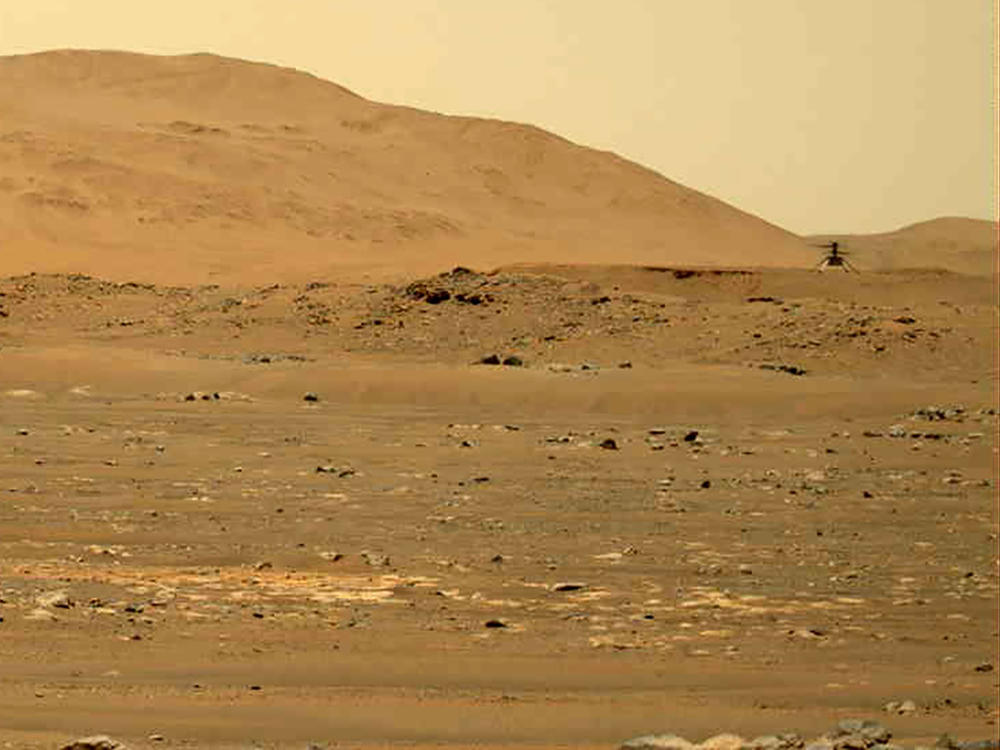Section Branding
Header Content
NASA Makes New Plans For Ingenuity Helicopter On Mars
Primary Content
NASA is allotting additional time to test the operational capabilities of its groundbreaking Ingenuity helicopter, which completed its first powered flight on Mars less than two weeks ago. Since then, the device has completed a total of four flights. If all goes well following its fifth voyage, NASA says it plans to jump start the "next phase" of tests.
"The Ingenuity technology demonstration has been a resounding success," associate administrator for the NASA Science Mission Directorate Thomas Zurbuchen said in a statement Friday.
"Since Ingenuity remains in excellent health, we plan to use it to benefit future aerial platforms while prioritizing and moving forward with the Perseverance rover team's near-term science goals," he added.
NASA's Perseverance rover, which landed on Feb. 18, brought the helicopter to the Red Planet. The rover has since been exploring the planet's terrain near the landing location, and its success has allowed for increased time to test the Ingenuity helicopter, NASA says.
The objective of the rover is to examine rocks and soil found on the planet that could indicate if previous life existed there 3.5 billion years ago. The mission will take two Earth years, which comes out to a single year on Mars.
Notably, NASA announced on April 21 that the rover's technology was effectively able to produce a small amount of breathable oxygen from the Mars atmosphere.
The original task of the Ingenuity helicopter was to show its flying ability, given the differences in atmospheric pressure and gravity found on the planet compared to Earth.
"Ingenuity's transition from conducting a technology demonstration to an operations demonstration brings with it a new flight envelope," NASA said.
"There will be more precision maneuvering, greater use of its aerial-observation capabilities, and more risk overall," it added.
The additional testing will be conducted over the next few months, ending no later than August.
While the first helicopter flight went just 10 feet above the ground, each voyage has drastically increased in distance. On the fourth flight, the helicopter rose 16 feet in the air and made a round trip of 872 feet across the planet.
An added power in the updates comes when looking at the imagery captured by the cameras atop the Perseverance rover, allowing people on Earth to witness the helicopter hover above the red and orange rocky desert floor.
Copyright 2021 NPR. To see more, visit https://www.npr.org.

